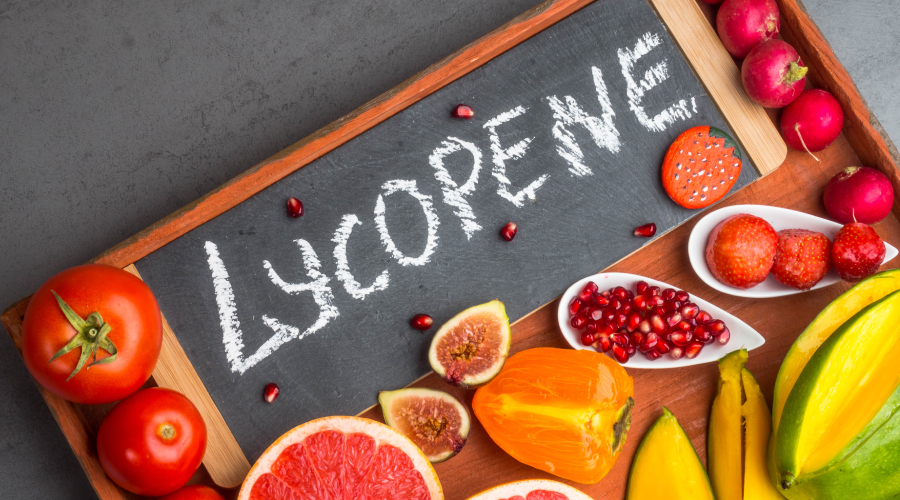The increasing awareness of the detrimental effects of solar ultraviolet (UV) radiation on human health, particularly the skin, has driven the search for effective photoprotective agents. Prolonged exposure to UV rays can lead to various skin-related issues, including sunburn and potentially more severe conditions. While chemically synthesized UV filters are prevalent in commercial sunscreens, concerns regarding their biocompatibility and potential side effects have spurred interest in natural alternatives. In this context, lycopene, a naturally occurring carotenoid pigment found in several fruits and vegetables, has emerged as a promising candidate due to its known antioxidant properties and its ability to absorb UV rays. This research investigates the extraction of lycopene from selected fruits – Capsicum annuum (capsicum), Capsicum frutescens (chili), Carica papaya (papaya), Citrullus lanatus (watermelon), and Solanum lycopersicum (tomato) – and assesses its potential as an ultraviolet ray protectant using Escherichia coli as a model system. The study seeks to provide a scientific basis for the utilization of fruit-derived lycopene in cosmetic formulations as a natural UV-blocking agent, aligning with the growing demand for herbal-based products with minimal side effects.
Methods
Lycopene was extracted from the pulps of the selected fruits using acetone as a polar aprotic solvent and petroleum ether as a nonpolar solvent to separate lycopene. The concentration of the extracted lycopene was determined using a UV–Vis spectrophotometer at a wavelength of 503 nm. Subsequently, thin films of varying concentrations of lycopene extracts from each fruit were coated on the lids of Petri plates containing E. coli cultures. The plates were then exposed to UV rays for 10, 20, and 30 minutes, and the growth of E. coli colonies was observed after incubation at 37°C for 24, 48, and 72 hours to assess the UV-blocking efficacy of the lycopene films.
Key Findings
•The study found significant variations in lycopene content among the tested fruits, with Solanum lycopersicum (tomato) exhibiting the highest concentration (3.36024 μg/mL) and Capsicum annuum (capsicum) the lowest (0.31824 μg/mL).
•The UV–Vis absorbance spectra of the extracted lycopene from all fruits showed peaks within the 440–530 nm range, confirming the presence of lycopene.
•Lycopene extracted from Solanum lycopersicum demonstrated the highest UV-ray blocking potential, reaching 99.75% after 72 hours of incubation following a 10-minute UV exposure. Conversely, Capsicum annuum showed the lowest UV-ray inhibition (77.78%) under similar conditions.
•The effectiveness of the lycopene films in protecting E. coli from UV radiation was found to be dependent on both the concentration of lycopene used and the duration of UV exposure. Higher concentrations of lycopene generally provided better protection, resulting in a greater number of surviving E. coli colonies after UV irradiation.
•A positive correlation was observed between the pH value of the lycopene extract and the amount of lycopene, with S. lycopersicum having a pH of 6.2 and the maximum lycopene content, while C. annuum had a pH of 4.5 and the minimum lycopene content.
This research provides valuable insights into the extraction and UV-protective properties of lycopene derived from selected fruits. The novelty of this study lies in its comparative assessment of lycopene films from different fruit sources as a direct physical barrier against UV radiation on a bacterial culture, demonstrating a tangible protective effect. The findings clearly indicate that lycopene, particularly that extracted from tomatoes, possesses significant UV-ray blocking capabilities, suggesting its potential as a natural ingredient in sunscreen and other dermatological preparations. The study supports the growing interest in utilizing phytochemicals from fruits and vegetables for skin protection, offering a potentially safer and more biocompatible alternative to synthetic UV filters. Future research should focus on optimizing the formulation of lycopene-based films and topical applications, assessing their stability under various environmental conditions, and evaluating their efficacy and safety on human skin. Further studies are also warranted to explore the synergistic effects of lycopene with other natural compounds for enhanced UV protection and to determine the practicality of large-scale production of lycopene films for cosmetic and therapeutic applications.
Link to the study: https://onlinelibrary.wiley.com/doi/epdf/10.1002/fsn3.70090

